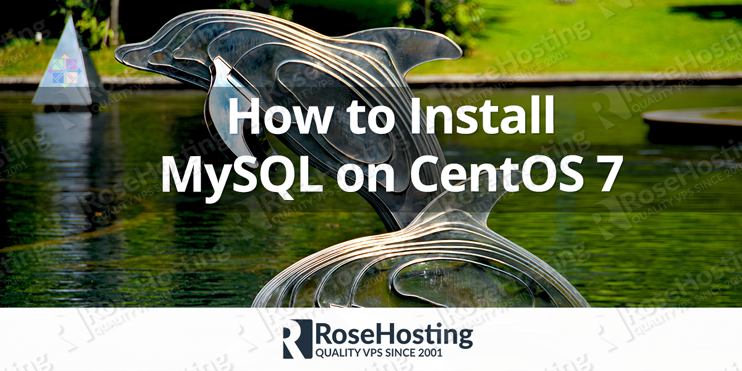

- Centos 7 install mysql server update#
- Centos 7 install mysql server software#
- Centos 7 install mysql server password#
- Centos 7 install mysql server download#
With the following command you guarantee that the MySQL service is started together with the OS $ sudo systemctl enable mysqld └─2931 /usr/sbin/mysqld -daemonize -pid-file=/var/run/mysqld/mysqld.pid Process: 2853 ExecStartPre=/usr/bin/mysqld_pre_systemd (code=exited, status=0/SUCCESS)

Process: 2929 ExecStart=/usr/sbin/mysqld -daemonize -pid-file=/var/run/mysqld/mysqld.pid $MYSQLD_OPTS (code=exited, status=0/SUCCESS)
Centos 7 install mysql server password#
A temporary password is generated for Zxdo1jb5&fTyĪgain we check the status of the MySQL service, note Active: active (running) line $ sudo systemctl status mysqldĪctive: active (running) since Tue 17:17:30 UTC 52s ago

When the service is started the MySQL server MySQL generates a temporary password, to know which is the password, type the following command: $grep -i password /var/log/mysqld.log Loaded: loaded (/usr/lib/systemd/system/rvice enabled vendor preset: disabled)Īfter starting the MySQL server it will be ready to handle DB connections. Once you've installed MySQL check if the MySQL service is runnin using systemd (systemd is a replacement for SysV system initialization is also a suite of service management and configurations for the GNU / Linux operating system) as shown in the message MySQL service is stopped, note Active: inactive (dead) line.

$ sudo yum install mysql-community-server Check MySQL status When you install the mysql-community-server package all dependencies and tools required to run and manage the MySQL server will be installed. If a new version of the kernel has been installed then reboot the OS with: $ sudo reboot Install MySQL
Centos 7 install mysql server update#
Once you've downloaded the definition of repository you can install it by typing: $ sudo rpm -ivh Updateīefore installing MySQL, it is recommended to upgrade the OS typing: $ sudo yum update
Centos 7 install mysql server download#
You can also download the package by typing the following command (if wget is not installed you can install it by running sudo yum -y install wget): $ wget Install repository definition Once you clicked on the red arrow the following options will be shown, the red box indicates the package you should download. The following figure shows the options you should choose for CentOS 7, the red arrow indicates where you must click to download the repository definition, the orange boxes indicate the packages you should download if you do not want to use the MySQL repository. MySQL 5.7 can be downloaded from the MySQL download site, however it is recommended to download the repository definition to keep updated with improvements and bug fixes. MySQL 5.7 is not available in the official CentOS repositories, it has been replaced by MariaDB: a fork of MySQL, MariaDB share features with MySQL but has a different development model and community. For all MySQL changes see: What Is New in MySQL 5.7. MySQL 5.7 improves security and performance over previous versions, also introduces the JSON data type, allowing to store non relational data.
Centos 7 install mysql server software#
The current MySQL development process is under Oracle's umbrella but the community version is released as free software and you can use under GPL terms. MySQL is a relational database server with a great reputation for being fast, efficient, safe, stable, easy to use, multiplatform (GNU/Linux, * BSD, Windows,…) and well documented.


 0 kommentar(er)
0 kommentar(er)
